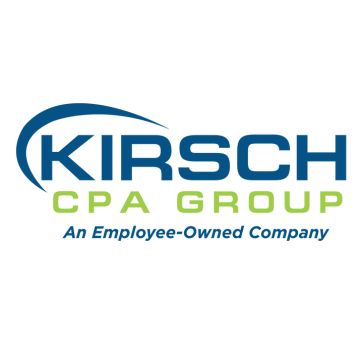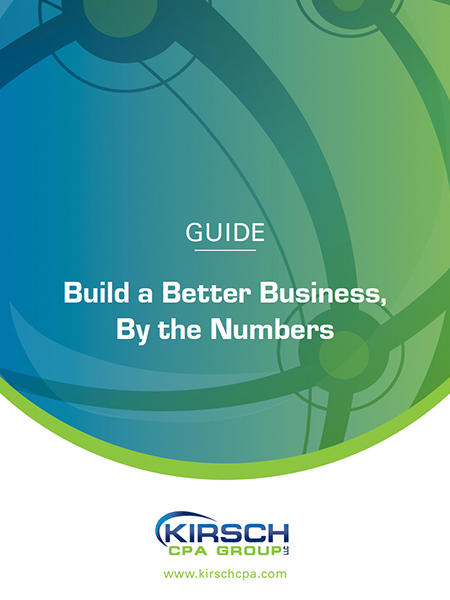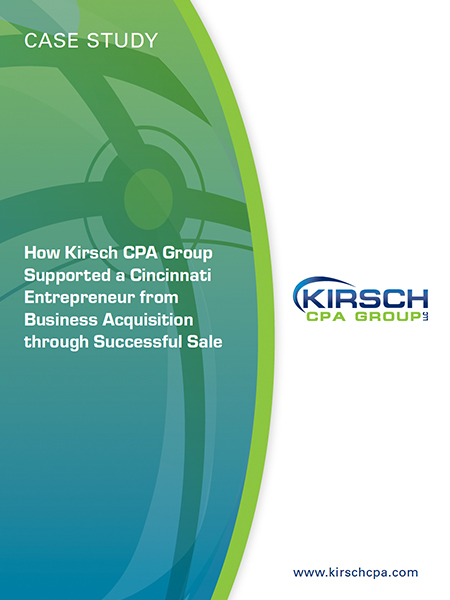PPP Loan Changes Included in the New Appropriations Act
Kirsch CPA Group
Jan 21, 2021

The Consolidated Appropriations Act (CAA) extends, liberalizes and expands the Paycheck Protection Program (PPP). Originally established by the CARES Act, the PPP expired on August 8, 2020. Now the CAA resurrects it. Here are the most important things small businesses should know from this section of the new law.
Second-Draw Loans
Under the new law, eligible small businesses can take out so-called “second draw” PPP loans. This provision targets smaller and harder-hit businesses with 300 or fewer employees that have used up, or have plans to use up, the full amount of their initial PPP loans. The maximum second-draw loan amount is $2 million. Only one second-draw loan can be taken out.
To be eligible, a business must demonstrate at least a 25% decline in gross receipts in the first, second or third quarter of 2020, compared to the corresponding 2019 quarter. For loan applications submitted after December 31, 2020, the business can use gross receipts for the fourth quarter of 2020, compared to gross receipts for the fourth quarter of 2019.
An eligible business can generally borrow up to 2.5 times its average monthly payroll costs in the year prior to the loan or in calendar year 2019. The limit is increased to 3.5 times payroll costs for businesses in the hard-hit accommodations and food service industries.
Important: The second round of the PPP, which includes the new second-draw opportunity, is funded with $284 billion. New loans can be made through March 31, 2021, or until the funding is exhausted.
Expanded List of Expenses That Qualify for Loan Forgiveness
The new law adds the following expenses to the list of qualifying expenses that can result in PPP loan forgiveness:
- Eligible operations expenditures, including payments for software, cloud computing, and human resource and accounting needs,
- Eligible uninsured property damage costs resulting from public disturbances that occurred in 2020,
- Eligible supplier costs, and
- Eligible expenditures for worker personal protective equipment (PPE) and eligible expenditures to help the borrower comply with COVID-19 federal health and safety guidelines or equivalent state and local guidelines, issued between March 1, 2020, and the end of the national COVID-19 emergency declaration (whenever that happens).
This expanded list of qualifying expenses is generally retroactive to March 2020, when the CARES Act was signed into law.
To be eligible for full PPP loan forgiveness, a business must spend at least 60% of the loan proceeds on qualifying payroll costs (including certain health care plan costs) and the remaining 40% on other qualifying expenses (such as mortgage interest, rent, utilities and the other expenses listed above). If your business doesn’t clear the 60% payroll cost hurdle, however, it may still be eligible for partial forgiveness of its PPP loan.
Simplified Forgiveness Application for Small Loans
The new law also mandates a simplified one-page application to apply to the Small Business Administration (SBA) for the forgiveness of a PPP loan that doesn’t exceed $150,000. The simplified application will require the borrower to state only two things:
1. The number of employees the borrower was able to retain because of the PPP loan, and
2. The estimated total amount of PPP loan proceeds that were spent on payroll costs.
No other documentation will need to be provided to the SBA with the simplified application. However, the borrower must attest that applicable guidelines were met when the PPP loan was taken out.
What’s the Tax Impact of Forgiven PPP Loans?
There’s good news about the tax treatment of forgiven Paycheck Protection Program (PPP) loans. The Consolidated Appropriations Act (CAA) clarifies that no deduction or tax basis increase is denied for expenditures paid with proceeds from forgiven PPP loans.
If your business takes out a PPP loan that’s forgiven, the forgiveness was always a federal-income-tax-free event. The CAA clarifies that you can deduct expenses that were paid for with proceeds from forgiven PPP loans. And you can obtain tax basis in assets that were paid for with proceeds from forgiven PPP loans.
When federal-income-tax-free treatment is allowed for a forgiven loan, you generally must reduce so-called “tax attributes,” such as net operating loss carryovers and capital loss carryovers. Under the CAA, no attribute reduction is required when PPP loans are forgiven. These favorable changes are retroactively effective to the beginning of the PPP in March 2020.
Stay Tuned
The CAA includes several favorable changes for PPP loans. However, the PPP has proven to be a moving target, and more changes could be included in future legislation. Contact Kirsch CPA Group at 513.858.6040 with questions related to the PPP.
More Resources

About The Author
Kirsch CPA Group is a full service CPA and business advisory firm helping businesses and organizations with accounting,…
Sign Up for Email Updates
Tags
Accounting & Financial News

Tax Law Changes: 10 Provisions Employers Need to Know
The One Big Beautiful Bill Act (OBBBA) includes a number of tax law changes that affect employers.…




